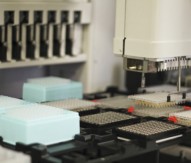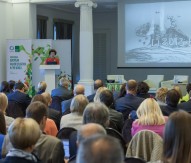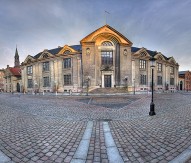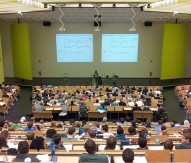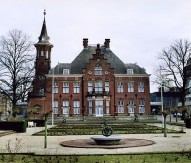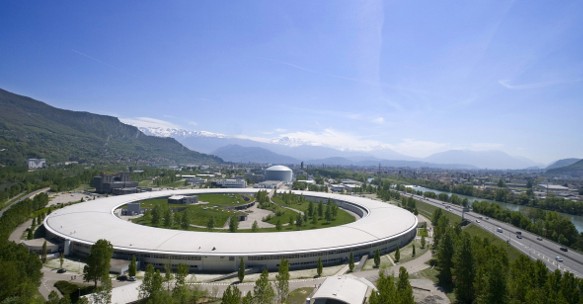
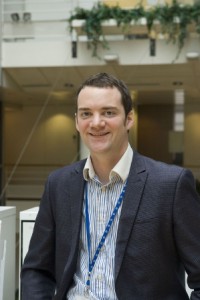
Dr Simon Kimber © C. Argoud/ESRF
Generation Y – the new era of scientists
Building an excellent science base and enriching the lives and careers of the next generation of Europe’s researchers is a key goal of Horizon 2020 and maintaining the EU’s scientific competitiveness. The next research framework programme offers several avenues of funding to young academics, including the European Research Council’s (ERC) Starting Grants and Consolidator Grants as well as the Marie Curie Actions.
Dr Simon Kimber is a post-doctoral researcher at the European Synchrotron Radiation Facility (ESRF) in Grenoble, France, an international research institute offering industry and academics the opportunity to undertake X-ray light research. Speaking to Horizon2020projects.com, he offers an insight into the challenges facing young researchers at the start of their careers and the support available from the EU.
What key barriers do young researchers face when establishing their scientific careers in Europe?
The main problem facing young people is the issue of short-term contracts, which can often last anywhere between 12 months up to a maximum of three years. There is a great deal of pressure on young people to keep churning out mediocre science so their publication records and citation lists keep growing and that, I think, prevents people from undertaking transformative science. Transformative science is extremely risky and young researchers need greater career stability in order to be able to take chances and carryout high-risk, high-reward research.
The ‘Americanisation of research’ is also unhelpful – the fact that you can judge somebody’s career by the average number of papers published each year and the average impact of those papers. The culture of ‘celebrity scientists’ is what is driving many short-term projects and reducing the lifespan of many young researchers’ careers. Realistically, a young person missing a year without publishing can often mean their career is effectively over, and that is not conducive to doing science.
What impact will ERC’s Starting Grants and the Marie Curie Actions have on assisting new scientists?
The Starting Grants programme is a fantastic initiative in terms of the funding they provide to early-career scientists. Yet, the funding is now so admirable for this programme, there is a huge disparity with national funding opportunities and the competition for Starting Grants is unbelievably fierce. It is common to that find the researchers applying and receiving these grants have already held a number of permanent academic positions and consequently there needs to be a downgrading in the years of experience when these grants are awarded and to ensure they are presented to researchers to help start their careers, rather than sustain them.
The Marie Curie Actions are a very attractive programme given the fact that they are targeted to scientists at an earlier stage of their career compared to the ERC grants. The Marie Curie Actions incite mobility and encourage people to come back to the EU, particularly if they have been working abroad.
Is European funding the main way of breaking into industry or are national funding opportunities still a key avenue of opportunity?
By far the largest way people become academically independent is through national funding. The ERC Starting Grants are almost misnamed because they really are the ‘blue-ribbon’ grants in Europe – there is no national grant that can compete with the sums of money available there, which is why they are really are only awarded to the academic ‘stars’.
One problem with the British-way of funding science is that it reduces the positive gains sought from collaboration. Grants are often held by an individual, which means that by collaborating with other researchers, even though it may lead to improved project results, you are in fact diluting project success. Consequently, collaborating too widely can be a good way of doing yourself out of independent funding.
What is the ESRF doing to assist researchers breaking into the scientific community?
The ESRF is increasing its interaction with industry – there is a very large number of people receiving PhDs now and many are embarking upon research careers. One of the positive actions of Ed Mitchell (head of business development, ESRF) is encouraging people to collaborate with both industry and academia, giving researchers who do not pursue long-term academic research careers important transferrable skills.
To what extent does the EU’s range of national diversities help or hinder collaboration in European research and development?
From the perspective of large institutions globally, for example the ESRF and the European Molecular Biology Laboratory, I think national diversity is the magic that makes these places tick. The fact that we have scientists working at these research infrastructures from all over Europe is our great strength. Working with other European scientists provides exposure to different ways of working; for example, I find many continental researchers to be more methodical and technically knowledgeable then typical British scientists and I think being exposed to different ways of carrying out scientific research is fantastic.
Dr Simon Kimber

